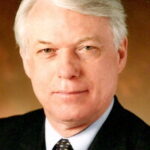In the first of this three-part series, Mike Hammer – aka ‘The Gig Doctor’ – defines a mapping process for HR leaders on the road to future work. Road signs and people skills necessary to survive and thrive with future work environments are offered. His hope with this series is to help HR professionals and corporate executives to unpack and identify forces which inhibit their understanding of future work and how to deal with the complexities of getting to future work.
When travelling by vehicle to an unfamiliar location, we take out our smartphone, type in an address and let a mapping application find our destination, giving us a map to get there with options of routes to travel. The application can also provide eateries, shopping and local events along your route and at your destination.
Ah, were it only that simple for HR leaders to plot their enterprise’s course with people resources required to reach growth objectives? Some tech vendors and internal executives would have us believe it is that simple, given the proliferation of apps being used for data analysis to achieve human capital aligned with company objectives.
We know phone apps which map visual travel route(s) and getting to that location are distinctly different activities. Events along mapped travel route(s) can change both your travel time and destination.
Most HR mapping strategies are not ready for these possibilities of changes along the route forward.
HR decision making about people resources are interdependent upon an increasing number of external issues
Here are some examples:
-
The skill sets needed today are not common among the available unemployed or underemployed populations. College IT classrooms overflow with students attempting to gain the skills needed for future work.
-
Birth rates in developed nations continue to decline and will bring a shortfall in the pool of potential workers in future generations.
-
Are unregulated immigration policies still a net positive — an economic asset or burden? There is evidence that unselective immigration policies impact a nation’s ability to fill the skills gap required for future work requirements.
-
Automation will continue to impact the need to import cheap, unskilled labour. Broader use of technology automation continues as costs decline and implementation becomes more widely accepted as an alternative (replacement) for human capital.
-
Compliance issues complicate staffing by the variance of labour laws and political issues across the globe. Using ‘independent’ contractors as a stopgap to skilled labour shortages can be problematic. I’ll cover more about the value of gig workers later in this content series.
HR leaders face challenges with more complexities
There are more speed bumps and potholes to this journey than previous travels for HR leaders and the C-Suite decision makers. We see denial, complacency, and procrastination as the most prevalent barriers to finding answers for defining the HR path forward.
For those HR leaders and executives reading this and thinking ‘not us,’ ‘not in our firm,’ keep reading.
HR planning methods are all over the ballpark these days. It seems like workforce planners attempting to play with a baseball without a cover on the baseball or overall team strategy.
This confusion is made clearer in enterprises of less than 10,000 employees. Survey data from LinkedIn showed an uptick of 69% in adoption rates of ‘people analytics’ among companies with 10,000 or more employees.

The rise of people analytics by David Green (Sources: l to r: Corporate Research Forum, LinkedIn, Visier): https://www.linkedin.com/pulse/rise-people-analytics-david-green/
While these data points seem good, one should remember many of these enterprises are early adopters of people analytics with financial commitments for strategic decision making. These early adopters are wringing out the bugs in HR technology apps to analyse their people data.
However, if these exercises do not incorporate the vast amounts of other data that an enterprise collects on everything from revenue by product line to market share changes, the results may fall short of executive expectations and perhaps future support for HR resources and systems.
Learn from HR associations and peers who have already made the leap forward with people analytics and also integrated internal data stores.
Depending on the generational makeup of one’s C-Suite members, experiences from moving up the management ladder often shape their vision for the future. Non-HR executives are more likely grounded in the past, which has worked in their favour but has a nearly invisible grasp on the ability to think outside their comfort zone.
Tell me how the output of legacy resource planning models will help find the markets for your best ROI, and how that will be used to realign your management and worker resources for future work?
Geoffrey Moore, in his book Escape Velocity, describes this strong power of muscle memory of the past which inhibits a zero-sum game in strategic planning. Something as simple as handing out last year’s plan with the expectation of using it as the template for forecasting gives credence to being just an update process. Not surprisingly, you will find most executives will be comfortable with that. Should they be?
A jumpstart approach to future work can put you on the wrong route to success
Good advice would be to learn from HR associations and peers who have already made the leap forward with people analytics and also integrated internal data stores.
Did they bring in an expert to help them sort and prioritise the data currently being collected and stored by your IT for its value and relevance to people resources planning? Does the data help define opportunity markets in which the enterprise does not currently compete but may consider? How will they or did they react to a shift in skill sets required as a result of exploiting new markets?
The answers to these and other market data are extremely important to planning people resources and mapping out the path to achieving just-in-time talent when needed.
Hence, when your talent acquisition bus arrives at a specific location and time to pick up the ‘right talent’ needed for the duration needed, HR will have that planned out and routed correctly – but not with a smartphone mapping approach.
A tsunami that will change workforce processes, chemistry and composition is coming. It is a powerful force driven by rapid technology improvements.
For HR doing more with less continues, unless you change it
Yes, we all know the road map for doing more with less. The model that squeezes out waste and gains efficiencies and higher productivity known as cyclical growth.
How many more budget and planning cycles can you repeat in this manner and grow? Secular growth models “means not to be repeated expansion of the market that occurs whenever a new category or a new class of customers is brought on board,” according to Geoffrey Moore [Escape Velocity pg. 75].
This guidance will move away from ‘doing more with less’ formulas and repeating last year’s strategy for people resources. We’ll discuss using secular growth plans for HR in more detail in a later article.
A tsunami is coming
A tsunami that will change workforce processes, chemistry and composition is coming. It is a powerful force driven by rapid technology improvements. This tsunami is unstoppable. It will affect every business and most of the planet’s population. It’s not here, yet.
There is still time to prepare and catch the wave rather than have your business drowned by its disruptive and destructive forces. My aim with this series is to help HR leaders do just that: become more aware of the upcoming seismic shift, understand its complexities, and get ready to change as rapidly as the world is set to.
NEXT TIME: Bridges from yesterday, won’t get you to tomorrow
In order to reach your destination of the future work environment, we need to detach those images reflected in our minds’ rear-view mirror. The HR techniques and assumptions established that build the bridges we crossed in the past will not support the skill sets we require to ‘shapeshift’ to a revised path going forward.
Next, we will explore how to sort out the good, the bad and the ugly from the bridges crossed to build new bridges that will support the path forward to future work.












One Response
As an HR professional
As an HR professional navigating the future of work, I find it crucial to emphasize employee well-being. This article underscores the evolving landscape and aligning HR strategies with changing dynamics. Speaking of checklists, here’s an interesting read on https://www.justluxe.com/community/the-ultimate-checklist-for-luxury-travel_a_1976354.php – a timely reminder that balance in work and leisure is essential for a holistic approach to employee satisfaction.